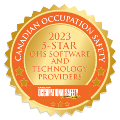Pandemic Planning and Business Continuity
February 26, 2020

Pandemic Planning and Business Continuity: Planning for the What if Factor Regarding the Coronavirus
Everyday we have new information in the media on the Coronavirus Disease which is now officially known as COVID-19. This virus is a rapidly changing situation and having a trusted source of information is important to have accurate and science-based data on this virus. We recommend the CDC Center for Disease Control information. Another website is WHO or the World Health Organization, who have a page devoted to Myth Busters.
At this point, it is difficult for authorities to predict how this situation will unfold. In North America the public health risk is considered low as of today. But this risk level seems possible to suddenly change with health authorities now telling us to prepare for a pandemic. Without sustained human-to-human transmission, most workers in North America are not at significant risk of infection. Much is unknown about how the COVID-19 spreads and uncertainty is never good for managing an infectious disease crisis or for business. It may be a timely reminder to review or create a business continuity plan in the event of a local emergency and if your local health authorities ever declare a public health emergency.
Create an Emergency Response Plan for Public Health Crisis'
It is important to have a plan before any emergency is declared in your local area. Planning will help you ease organizational challenges. During a public health emergency, your business will need to comply with legislated requirements.
Your emergency response plan needs to look at your risk in the event of a public health care emergency as declared by local authorities. If you work in certain industries like airlines, law enforcement, EMS, or healthcare you have a different risk profile and level of emergency planning than a manufacturing plant or an oil field services company. But everyone’s lives would be disrupted in some way if large numbers of people in your community require medical care at the same time and slowing the spread of a respiratory virus may require cancelling large gatherings, school, childcare, and travel.
Another question to ask in emergency planning are - How will your business be impacted if it experiences high worker absenteeism for a 2-6-week period? Identify at-risk individuals that may be disproportionately impacted by an incident or event. Workplace absenteeism may be indirectly affected by employees who need to stay home to care for sick family members.
Assess the Health Risks to Workers and the Organization
Emergency Response Planning starts with assessing risks to workers and the organization.
- Set priorities based on organizational and safety critical functions.
- Establish plans to control exposures in the workplace.
- Develop policies to operate during a health emergency.
- Establish and communicate policies for absenteeism.
- Plan succession options and cross-train.
- Define and communicate chain of command in the event of absenteeism.
- Plan communication strategies and review policies.
If we look at the current respiratory virus of public health concern COVID-19, CDC has reported that in the majority of cases so far, COVID-19 has spread mostly from person-to-person. People infected were in close contact (within 6 feet) with someone who was sick; it seems to transmit through respiratory droplets (infected person coughs or sneezes), and enter through contact with the mouth, eye, and nose or inhaled into the lungs.
Administrative Controls to Prevent Transmission of Respiratory Viruses in Your Organization
The most effective control for a business to minimize exposure to this type of respiratory virus is to prevent person-to-person transmission. List all your routine and non routine job tasks to see what requires person-to-person interaction. Do you need to be in close proximity to others to complete the task (1 metre to 3 feet)? Do tasks need to be done in public areas? How will you cope with shortages in operational and safety critical functions due to anticipated increased absenteeism?
Administrative controls to prevent transmission of a respiratory virus can include:
- Implement supportive sick leave policies so employees and contractors know to stay home if they display any symptoms.
- Implement flexible policies that permit employees to stay home to care for a sick family member.
- Implement technology to assist with communication and reduce face-to-face interaction.
- Educate on regular hand washing and install hand sanitizer stations.
- Remind people of respiratory etiquette: covering your nose & mouth when coughing and/or sneezing; disposing of tissues into a waste bin; and washing hands afterwards.
- Implement flexible and alternate work arrangements so people can work remotely.
- Train people to cover other roles in case of extended absenteeism.
- Increase workplace cleaning & decontamination of surfaces. Provide disposable disinfectant wipes in the workplace.
- Reduce non-essential travel.
- Isolate and send people home who exhibit symptoms at work.
The use of administrative controls is considered to be more effective and practical to control the spread of infection than the use of respiratory protection or RPE (i.e. face masks and respirators). The use of masks to control transmission for the general population who are healthy has not shown to be effective. Supply of RPE in a health care crisis would be limited to health care workers and people with compromised health conditions so masks and respirators are not a practical option to control transmission.
Outbreaks of respiratory illnesses can happen every flu season from November to April. It is important to remember the risk for contracting COVID-19 in North America as of today is relatively low, in fact, you are at greater risk of contracting influenza in Alberta which has already reported 6,413 confirmed cases this season. These controls apply as well for the cold and flu season.



